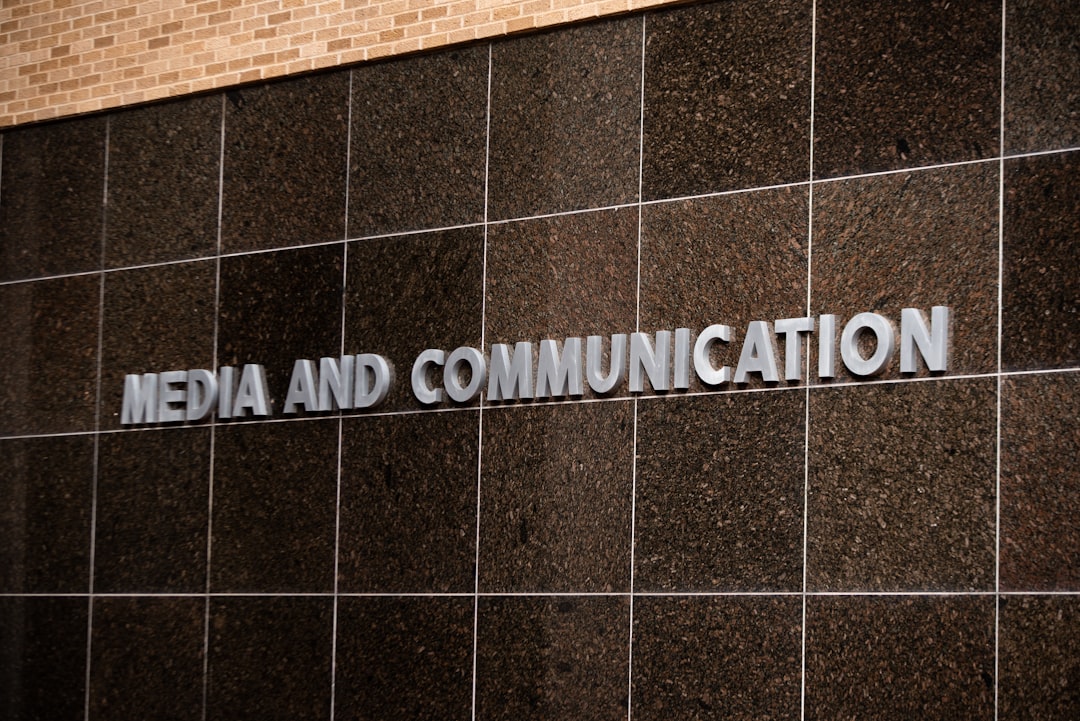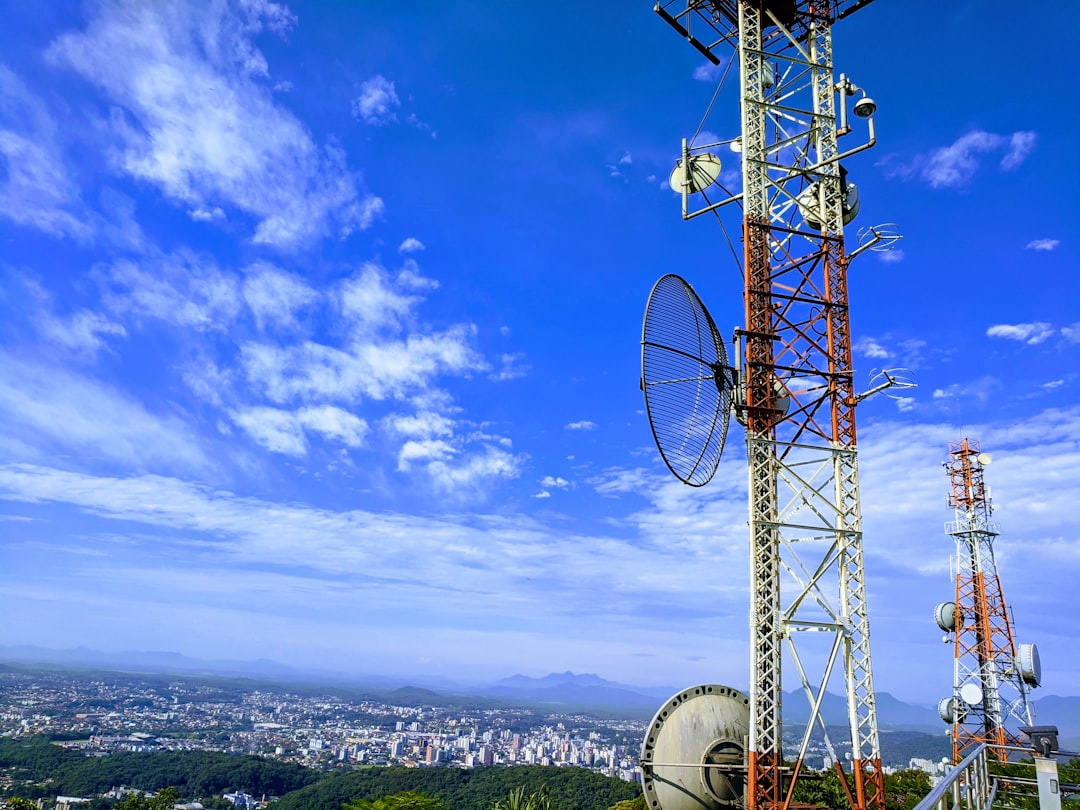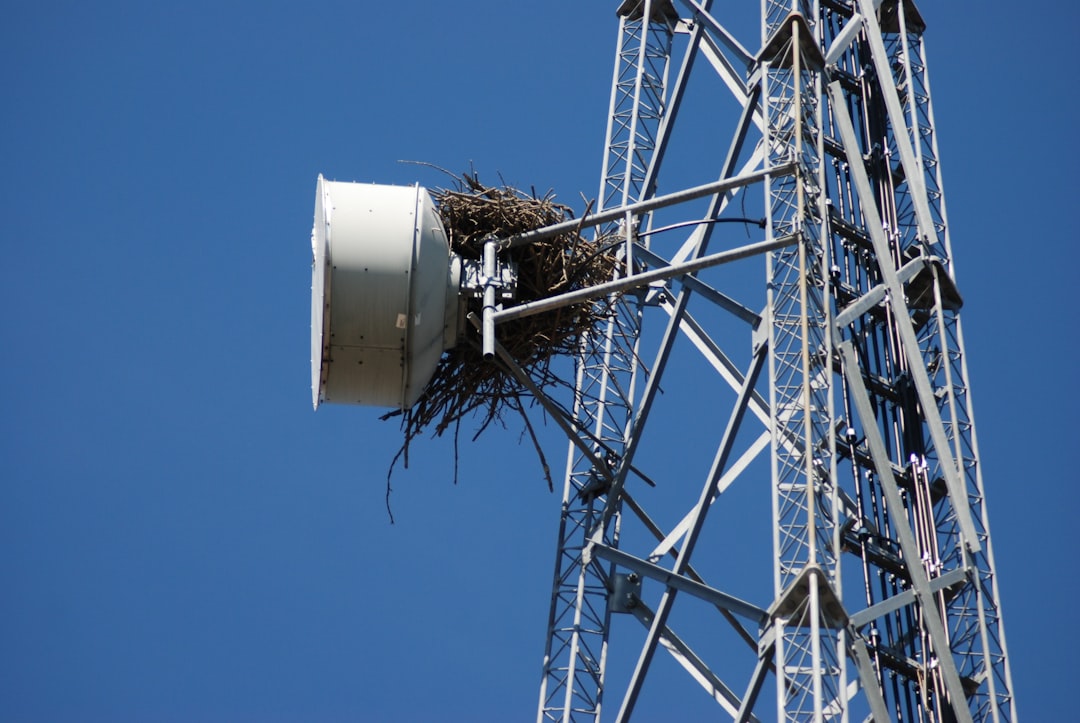

Engage prospects with a scan and streamline customer engagement with FREE QR code marketing tools by Sona – no strings attached!
Create a Free QR CodeFree consultation

No commitment

Engage prospects with a scan and streamline customer engagement with FREE QR code marketing tools by Sona – no strings attached!
Create a Free QR CodeFree consultation

No commitment
In today’s digitally driven world, QR codes have evolved from a novelty to a strategic powerhouse for bridging offline engagement with online action. For telecommunication consulting firms, they offer a fast, frictionless way to connect prospective clients to content, diagnostic tools, RFP intake, and follow-up paths with a single scan. No app download is required, and your team can update destinations in real time.
Used correctly, QR codes become the connective tissue that turns trade show conversations, printed collateral, and onsite technical deliverables into measurable pipeline. This article details how telecom consulting firms can deploy QR codes to capture more leads, accelerate handoffs to sales, and make attribution airtight across channels, with practical examples, checklists, and analytics guidance you can put to work immediately.
When paired with modern platforms like Sona QR, firms can centralize code management, enrich CRM records with scan activity, and attribute revenue back to specific placements or campaigns. The result is a cohesive offline-to-online funnel that scales while preserving the high-touch experience enterprise buyers expect.

Missed opportunities and incomplete prospect data often haunt telecom consulting firms that rely on traditional offline methods. Paper sign-up sheets, business-card bowls, or untagged booth traffic lead to inaccurate data and delayed follow-up. If a prospect pockets your whitepaper or sits through your conference session without taking a visible action, that interest can disappear without a trace.
QR codes bridge this gap between physical touchpoints and immediate digital outcomes. A simple scan can direct a prospect to a form, a consultation scheduler, a solutions blueprint, or a case study library. For forms, consider using a Google Forms QR to streamline submissions. When every offline asset becomes a digital entry point, you consistently capture high-value interactions and ensure no lead is lost. Firms that replace manual processes with QR-driven workflows improve response times, raise conversion rates, and accelerate pipeline from the very first touch.
A telecom strategy consultant who replaced manual event staffing sheets with QR-driven digital registrations reported a 37 percent lift in accurate, rapid follow-up—see this 900+ signups case study. Firms that deploy QR at scale across their physical footprint can import real-time signals into sales systems, reducing latency, improving qualification, and converting curiosity into conversations while the interest is fresh.

Telecommunication consulting firms sell complex, high-value services through lengthy sales cycles. Decision-makers encounter your brand in meetings, at conferences, and through print collateral long before they engage a sales representative. The biggest challenges in this motion are visibility, speed, and attribution. Without clear paths from offline interest to digital action, pipeline remains opaque and inconsistent.
QR codes address these pain points directly by letting prospects act in the moment. Instead of waiting until after an event to search for your website or compose an email, a scan completes the bridge. You can serve context-aware content, collect intent signals, and route leads or RFIs to the right team without relying on memory or manual data entry. Better yet, dynamic codes ensure the destination can change as campaigns evolve, so your print materials stay relevant after a conference ends or a new offer launches.
It is increasingly common for telecom consulting firms to apply QR codes across appointment cards, technical one-pagers, case study booklets, OOH airport ads, and even on the covers of audit reports. In each instance, the code turns an otherwise passive impression into a measurable, actionable step in the buying journey.

Not all scans serve the same purpose. Selecting the right QR code format for each touchpoint can be the difference between an anonymous visit and a sales-qualified conversation. Telecommunication consulting firms typically combine several formats to match context, timing, and buyer intent.
Start by mapping the desired action to the most suitable destination. If you need contact details or project context, send scanners to a dynamic form or consultation scheduler. If networking is the priority, use vCards so decision-makers can save your details in seconds. For fast follow-up, pre-filled SMS or email can capture a request without making a visitor find a keyboard in a crowded hall.
With Sona QR, you can generate and manage all of these formats from one platform, switch destinations without reprinting, and apply consistent tracking parameters so your analytics are complete and comparable across campaigns.

Growth in telecom consulting is often constrained by unmeasured offline activity. To unlock new pipeline, focus on high-interaction environments where buyers already engage with your brand but attribution is weak. A strategic QR rollout converts these touchpoints into lead capture, qualification, and insight collection that informs your broader go-to-market strategy.
Start with a quick audit. List your standard materials, environments, and recurring events, then identify which ones rely on delayed or manual actions from prospects. Add a QR-enabled next step to every item on that list. Over time, you will learn which placements attract the most qualified interest and which content resonates at each stage of the buyer journey.
By instrumenting these placements, you will convert previously invisible engagement into named contacts and executable next steps, while accumulating the marketing intelligence required to refine your content and channel mix.
QR codes are most effective when anchored to moments that matter in your client journey. The following use cases map to common interactions in telecommunication consulting and show how to translate scans into business outcomes.
By layering QR-enabled journeys across these touchpoints, your firm reduces friction for prospects, surfaces new intent signals, and builds a pipeline that is both measurable and timely.
Every QR scan captures a slice of intent, context, and behavior. When you distribute unique codes across assets and journey stages, you build a rich dataset that supports precise retargeting and informed sales actions. The goal is to tag scanners by who they are, what they want, and where they scanned, then tailor their next experience accordingly.
In telecom consulting, you often address distinct audiences such as enterprise CIOs, networking heads, procurement leads, and service providers. Each persona responds to different offers, proof points, and formats. By aligning QR destinations and tags to those distinctions, you empower marketing to nurture effectively and equip sales to prioritize the right conversations.
With Sona QR as your gateway and Sona.com for cross-channel attribution, each QR becomes a smart entry point. You can retarget based on real behavior rather than assumptions, building sequences that respect buyer context while accelerating movement through the funnel.
QR codes serve as connectors that unify your offline presence with your digital marketing and sales engine. Rather than treating posters, brochures, and events as distinct tactics, build a connected funnel in which every physical interaction leads to a curated digital experience, and every scan enriches your centralized dataset.
This integration lets you attribute outcomes to specific touchpoints and refine your spend where it matters. You can discover which collateral resonates with CTOs compared to procurement, which event placements generate qualified interest, and which offers drive consultations rather than casual downloads.
QR codes become the offline onramp to your digital funnel. With a centralized platform like Sona QR, your team can manage codes, monitor performance, and sync scan activity with CRM and ad platforms, giving you a closed-loop view from first touch to revenue.
Effective QR campaigns do not happen by accident. They are the result of deliberate planning, disciplined execution, and continuous optimization. This checklist provides a structure you can use to launch your next campaign with confidence.
Start by clarifying the business outcome, such as generating qualified consultations at a telecom summit or surfacing expansion opportunities after a network assessment. Then align code formats, placements, and tracking tactics to support that outcome. Finally, ensure every scan triggers an appropriate follow-up so interest turns into action.
Define your campaign goal precisely. Are you aiming to capture consult requests, drive workshop registrations, collect feedback on deliverables, or invite RFP submissions? For example, at a major industry conference, your primary goal might be to book 30-minute roadmap consultations with enterprise network leaders. State the goal, audience, and expected next step clearly so all stakeholders align on what success looks like.
Align the QR code’s purpose with a tangible business outcome. If the goal is immediate conversations, send scanners to a calendar scheduler with pre-set time blocks. If the goal is to educate and qualify, send them to a gated resource bundle that collects role, timeline, and key initiatives. The destination must match the buyer’s context in the moment.
Choose between static and dynamic codes based on flexibility and data needs. Static codes work for fixed, evergreen content like an ungated overview PDF. Dynamic codes are better for campaigns and events because they let you edit destinations, apply tracking parameters, and run A/B tests without reprinting. In almost every lead capture scenario, dynamic codes are the better choice.
Match the code type to the format that best serves your use case. For example, use a dynamic web link for a gated playbook, a vCard for a fast networking exchange, or a pre-filled email for executive follow-ups. With Sona QR, you can generate any of these formats, manage them centrally, and change them on the fly.
Design with intent. Add your logo and brand colors for trust, include a clear visual frame, and write a benefit-driven CTA near the code such as Scan to book a consult or Scan for the ROI toolkit. Ensure sufficient contrast and size so the code is scannable from the distance and angle where it will be viewed.
Test thoroughly in real-world conditions. Check multiple devices and camera apps, verify scannability under different lighting, and assess whether the destination loads quickly on mobile. Run a small pilot at your office or a smaller event before scaling to a major conference, then incorporate feedback into the final design.
Place codes where your decision-makers will naturally see and scan them. In telecom consulting, high-impact placements include booth backwalls and counters, demo stations, session slides, printed one-pagers, direct mailers to target accounts, and the cover pages of assessment reports. Use unique codes for each placement to evaluate performance.
Match placement to behavior and context. For example, put a short, ungated teaser on busy aisle signage to minimize dwell time, and put a deeper gated offer on a one-pager for prospects who engage in conversation. For direct mail to executives, personalize the destination with their company name and relevant solution paths.
Instrument your campaign from the start. Use UTM parameters to attribute scans by channel, placement, and creative. Integrate scan data with your CRM so contacts are enriched with the source and intent. Set alerts to notify account owners when strategic accounts scan multiple times.
Optimize continuously. Monitor scan volume, scan-to-form conversion, and time to sales outreach. A/B test landing page headlines, forms, and CTAs. Redirect underperforming placements to new offers, or shift QR design and size to improve scannability. With Sona QR, you can view live analytics, automate follow-up, and iterate mid-campaign with minimal disruption.
By systematizing these steps, telecommunication consulting firms convert interest into identifiable leads, prevent missed follow-ups, and strengthen their marketing database with high-fidelity signals that inform future decisions.

Telecom consulting leaders are under pressure to prove ROI across a mix of offline and online tactics. The handoff from a physical touchpoint to a digital action is where traditional tracking breaks down. Without robust analytics that link scans to buyer progression, teams cannot prioritize effectively or justify spend on the channels that actually produce revenue.
Smart QR analytics fill this gap. When every scan is captured with time, placement, device, and destination, you can map the buyer journey from the moment of interest. Over time, this data reveals which surfaces earn attention, which offers convert, and how scan activity correlates with pipeline stages and closed business. It also uncovers cross-sell and expansion signals in post-sale contexts, such as repeated scanning of managed services content by an existing client.
With Sona QR and Sona.com, you can go further. Scan-level data flows into a single dashboard, enriches CRM records, and connects to multi-touch attribution. You can see how QR engagement combines with website visits, ad clicks, and email interactions, then attribute revenue to the full journey. That visibility converts QR from a tactical experiment into a core component of your performance marketing strategy.
Expanding QR success is about consistency and clarity. Make sure every code has a purpose, every placement has a plan, and every scan triggers the next best action for that buyer. As you scale, document your standards so consultants and marketers deploy QR codes in a uniform, high-quality way.
Focus on the media your audience actually encounters. For telecom consulting, that often means conference assets, technical deliverables, and executive mailers. Match your QR format and CTA to the action you want and the environment in which it will be scanned.
Creative deployment examples include adding QR codes to the cover of RFP responses to facilitate direct communication with your bid team, placing QR stickers on demo equipment racks that open solution diagrams and security policies for compliance reviewers, and including QR codes on invoices that let clients book a quick roadmap review before renewing a managed services retainer. Each tactic creates another moment where interest becomes action.
QR codes are more than handy shortcuts. For telecommunication consulting firms, they are a strategy that turns every physical surface into a digital entry point and every moment of interest into a measurable step toward revenue. When thoughtfully designed and integrated, QR campaigns help you meet buyers where they are, capture intent instantly, and weave offline activity into a fully attributed digital journey.
With Sona QR, you can generate and manage dynamic codes, standardize tracking, and sync scan activity to your CRM and ad platforms. Sona.com extends that visibility with identity resolution, buyer journey insights, and revenue attribution, so you can see and scale what works. Start creating QR codes for free: https://www.sqr.me/register
QR codes have revolutionized telecommunication consulting firms by transforming lead capture into a seamless, data-driven process. They empower firms to acquire qualified leads, enhance client interactions, and streamline follow-ups—all critical for closing deals in a competitive market. Imagine instantly identifying which campaigns generate the highest-quality prospects and adjusting your strategy on the fly to maximize ROI.
With Sona QR, you gain access to dynamic, trackable QR codes that update in real time without the need for reprinting. This means every scan connects directly to actionable insights, enabling you to nurture leads more effectively and demonstrate clear campaign impact. Start for free with Sona QR today and turn every scan into a powerful opportunity for growth and client acquisition.
The article highlights firms using platforms like Sona QR to deploy QR codes across events, print collateral, and digital campaigns to capture leads and attribute revenue accurately.
Telecommunication consulting firms help your business bridge offline engagement with online actions by deploying QR codes that capture leads, accelerate sales handoffs, and provide measurable attribution across channels.
They offer services such as strategic QR code placement, dynamic code management, CRM integration, campaign tracking, lead capture optimization, and offline-to-online marketing funnel creation.
Choose a firm that provides dynamic QR code solutions, integrates with your CRM, offers analytics and attribution capabilities like Sona QR, and has experience aligning QR campaigns with your business goals and buyer journey.
Benefits include consistent lead capture, improved follow-up speed, better pipeline visibility, precise attribution, scalable offline-to-online engagement, and actionable insights for marketing and sales optimization.
QR codes convert offline interactions into immediate digital actions such as form submissions or consultation scheduling, reducing missed opportunities and ensuring complete, accurate prospect data.
Common formats include web links to gated content, vCards for quick contact exchange, pre-filled SMS or email for fast follow-up, event registration links, and dynamic forms tailored to telecom use cases.
Effective placements include conference booth signage, printed collateral covers, direct mailers, out-of-home ads, event badges, technical reports, and digital signage to capture buyer interest at multiple touchpoints.
By assigning unique QR codes per funnel stage and tagging scans with audience intent, firms can segment prospects, sync data to CRMs and ad platforms, and create precise retargeting campaigns based on real behavior.
They should define clear goals, select appropriate QR code types, design and test codes thoroughly, deploy codes across high-impact channels, and continuously track and optimize campaign performance.
They capture scan metadata such as time, location, and device, link scans to contacts in CRM, map engagement to sales outcomes, assess repeat interactions, and optimize marketing spend based on detailed analytics.
Use unique codes for each asset and placement, add UTM parameters for tracking, automate follow-up workflows, educate staff and prospects on scanning benefits, and maintain consistent quality and clarity in QR deployments.
Because they close the offline-to-online gap, speed up prospect engagement, allow dynamic content updates, enable precise attribution, and scale cost-effectively across complex, high-value sales cycles.
Yes, placing QR codes on deliverables and reports enables real-time feedback collection, surfaces risk indicators early, improves retention, and uncovers cross-sell opportunities.
Use Sona QR's trackable codes to improve customer acquisition and engagement today.
Create Your FREE Trackable QR Code in SecondsJoin results-focused teams combining Sona Platform automation with advanced Google Ads strategies to scale lead generation

Connect your existing CRM

Free Account Enrichment

No setup fees
No commitment required

Free consultation

Get a custom Google Ads roadmap for your business






Launch campaigns that generate qualified leads in 30 days or less.
